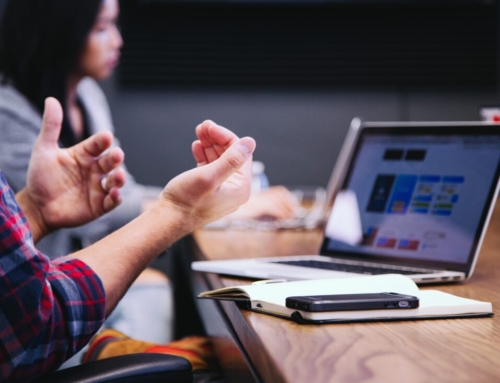Conventional wisdom from the field of psychology tells us that positive emotions are most conducive to creativity while negative emotions are detrimental. Yet, negative moods have some surprising benefits in terms of stimulating creativity.[1]
With no end in sight to the coronavirus pandemic, this is an ideal time to use your emotions as a therapeutic catalyst to express your creativity. Channelling your feelings of sadness, fear, or anger into drawing, painting, music, poetry, or writing will help you transform pain into well-being.
Joe Forgas[2], a social psychologist who studies emotion, affect, and mood, says that while positive moods promote creativity, flexibility, co-operation, and life satisfaction; sadness sharpens our attention, making us more focused and diligent. His research suggests being miserable at times can also improve our creative performance.
Difficult challenges —be they in art, writing, or solving technical problems—involve tasks that require diligence, persistence, and focus. Interestingly your scope of attention, is not motivated by positive or negative emotions per se, but motivational intensity[3]. Motivational intensity compels you to either approach or avoid something.
It’s the emotional intensity of happiness, anger, sadness, and so on, that provides the impetus for creativity. I know from my own experience if I don’t really care about a particular problem, I find it very hard to be creative. However, if I do care, I experience a high motivational intensity to pursue my creative challenge, even when it’s difficult. Psychologist Eddie Harmon-Jones says, “Low motivational states facilitate the search for new goals to pursue, whereas high motivational states focus us on completing a specific goal.”
Low motivational intensity might explain why boredom sparks creativity. “When we’re bored, two key things are happening in our mind,” says John Eastwood[4], a psychologist at the Boredom Lab at York University, Canada:
“The first thing is what I would call a ‘desire bind’. That’s when someone is kind of stuck because they desperately want to do something but they don’t want to do anything that’s on offer. Secondly, when you’re bored, your mental capacity is lying fallow. We’re itching to engage our minds. These are the two core things that are what it means to feel bored.”
Boredom has led to a flourishing of creativity during the pandemic.
One of the more positive outcomes of the pandemic is having more time to be creative. I marvel at the families who are converting boredom into creativity and posting art, games, and dances on social media.
I love the art people have created in response to the Between Art and Quarantine.challenge, begun last March, for everyone at home who needs relief. Make some homemade art following three rules:
1. Choose artwork
2. Use 3 household items
3. No photoshop
It was started by the Rijksmuseum in Amsterdam, and the Getty Museum stepped up to create a similar challenge. I am amazed by the creative genius of “regular” people, in their response to the challenge. It just goes to show that we are all creative if we give it a chance.
Keys to enhancing your creativity
Psychologist and author Mihalyi Csikszentmihalyi, says people focus their life activities by responding to two powerful motivations.
One is the ability to enjoy being creative for the sake of exploration and invention which has over generations enhanced human society’s ability to survive in an unpredictable world.
The other is to derive pleasure from comfort and relaxation which allows us to rejuvenate ourselves and to recover our energy to maintain overall health and well-being. A balance of these two motivations can lead to enhanced creativity.
Csikszentmihalyi offers suggestions for enhancing creativity:
- Try to be surprised by something every day.
- When something strikes a spark of interest, follow it.
- Recognize that if you do anything well it becomes enjoyable.
- To keep enjoying something, increase its complexity.
- Make time for reflection and relaxation.
- Look at problems from as many viewpoints as possible.
- Produce as many ideas as possible.
- Try to produce unlikely ideas.
Engaging in an enjoyable creative activity just once a day can lead to a more positive state of mind and an enhanced state of well-being, according to a study published in the Journal of Positive Psychology[5]. The effects of this activity will permeate other aspects of your life. The key is to be creative and make the activity enjoyable.
Happiness and creativity go hand in hand
These are some of the ways I am taking care of my well-being and cultivating my creativity during the COVID-19 Pandemic which might inspire you to adopt or adapt in your life.
- I take time for yoga and being in silence every morning, followed by coffee, and reading articles online that interest me
- I join several communities every week on Zoom to learn new things and to connect with people far and wide
- I listen to inspiring talks of a spiritual nature every week and sketch the essence of what I am feeling/sensing about the talk.
- I am keeping a visual pandemic journal and posting some of my images on Instagram.
- I de-stress and relax by hiking and biking
- I have answered the call deeply embedded in my homo-sapien brain to bake bread and I am starting to get good at it
- I recognize that the future is virtual and I am preparing myself by learning as much as possible and creating new ways to be of service and offer value. Some of this learning happens through experimentation within a community of practice.
We are living in a chaotic and confusing time, but within chaos lies the seeds of creative potential. Use this time for creative renewal and experimentation. Attend to your emotions and bring them into balance.
When you are in a quiet and peaceful state your intuition can guide you on what you need to focus on during this time of great upheaval, and where to place your energy and resources. When making a decision, ask yourself if you are coming from a place of love or fear. Love will always lead you to choices and decisions that are best for everyone concerned.
See also
Why You Need to Cultivate Your Inner Life (as a Leader)
How to Thrive in the Face of Turmoil and Adversity
Capitalise on Creativity in Times of Turbulence
References
[1] Kaufman, Scott Barry. The Emotions That Make Us More Creative HBR.August 12, 2015
[2] Forgas, Joseph P. The upside of feeling down: the benefits of negative mood for social cognition and social behaviour, Sydney Symposium of Social Psychology, 2011: social thinking and interpersonal behaviour
[3] Kaufman, Scott Barry. The Emotions That Make Us More Creative HBR,August 12, 2015
[4] Thorp, Clare. How boredom can spark creativity. BBC 22nd May 2020
[5] Tamlin S. Conner, Colin G. DeYoung & Paul J. Silvia. Everyday creative activity as a path to flourishing Journal of Positive Psychology 2016





